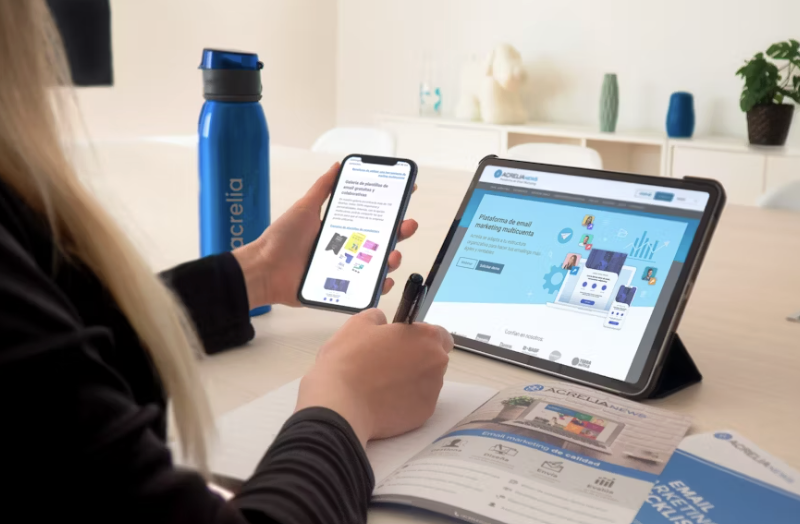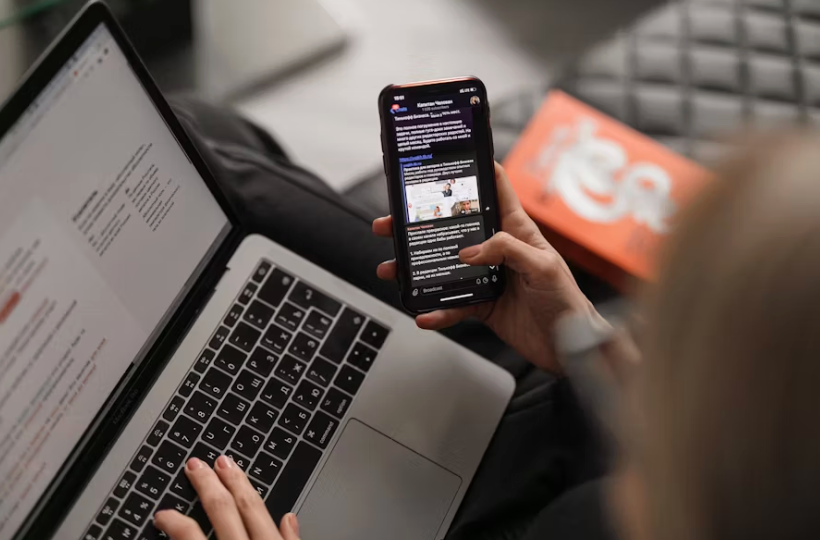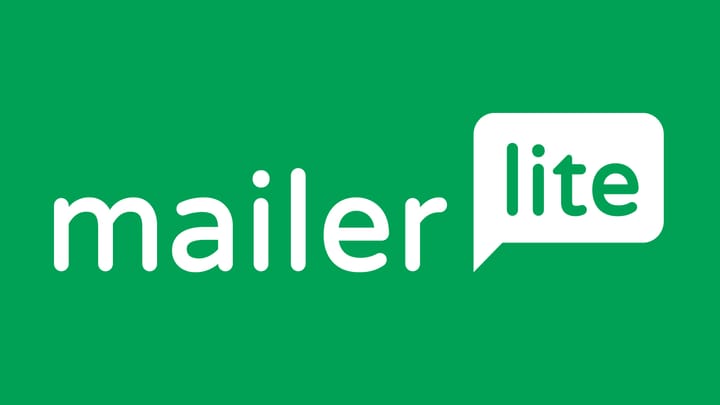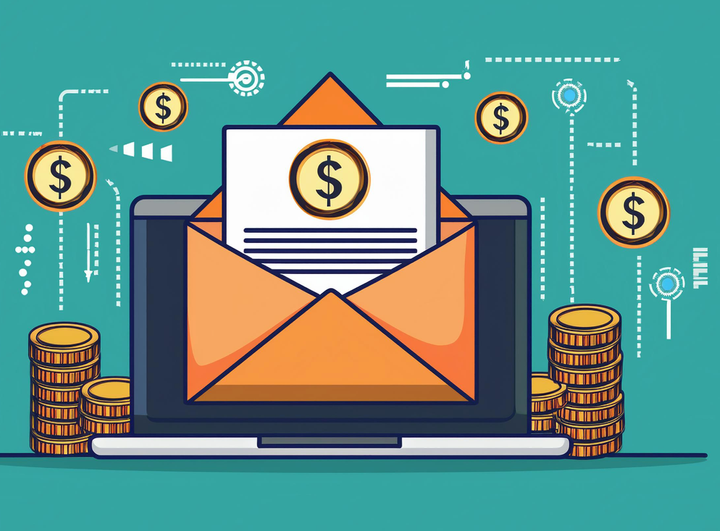B2B Email Marketing in 2025: Why It Still Outperforms LinkedIn and Paid Ads
Every few years, someone declares email marketing dead. Yet here we are (again). While marketers chase the latest platform trends and pour budgets into LinkedIn ads, the businesses seeing the best returns stuck with their email lists.

Every few years, someone declares email marketing dead. Yet here we are (again) in 2025, and 41% of marketers say email is their most effective channel, putting it far ahead of social media and paid search which both tie at 16%.
While marketers chase the latest platform trends and pour budgets into LinkedIn ads, the businesses seeing the best returns stuck with their email lists. This isn't nostalgia—it's math.
Email marketing generates between $36 and $40 for every dollar spent, translating to a 3,600% to 4,000% return on investment.
More importantly, email gives you something increasingly rare in digital marketing: control over your audience and direct access to decision-makers.
The ROI Reality Check
Let's talk numbers.
Email marketing yields an average cost per lead of $53. Compare that to LinkedIn ads averaging $408 per lead, with some B2B companies paying $800 or more, or paid search at $110 per lead on average. Email doesn't just win by a small margin—it's dramatically cheaper.
But cost per lead only tells part of the story. 51% of B2B marketers consider email marketing to be their most effective lead generation strategy. Meanwhile, 59% of B2B marketers cite email as their top channel for revenue generation.
Here's where it gets interesting: an email list compounds in value over time. When you spend money on a LinkedIn ad, you pay for each impression. Stop paying, and your visibility disappears immediately. Your email list is an asset you own. A subscriber you added two years ago still receives your messages today at no additional acquisition cost.
The math is straightforward. The average email marketing ROI is $42 for every $1 invested in an email campaign. That subscriber who wasn't ready to buy when they joined might become your biggest customer next quarter.
What Changed (and What Didn't)
The digital marketing landscape shifted significantly, but not in the ways people expected.
LinkedIn advertising costs climbed steadily. Average LinkedIn ad costs are $2.00–$3.00 per click, $5.01–$8.00 per 1,000 impressions. More concerningly, average CPMs on LinkedIn are around $34, with premium industries like finance seeing $8-$12 CPM and tech/SaaS seeing $7-$11 CPM. As more B2B companies piled onto the platform, competition intensified and organic reach dropped.
Paid advertising faces another challenge: people learned to ignore ads. 86% of consumers experience banner blindness. Your brain literally filters out content it recognizes as advertising. Display ads have an average click-through rate of just 0.46%, and banner ad CTRs have dropped from an initial 1% to 0.05%.
Meanwhile, email marketing evolved. 57% of B2B marketers now employ AI technologies for email marketing—more than double the 26% just 2-3 years ago in 2022. AI and automation tools became sophisticated enough to personalize messages at scale without requiring massive teams.
The psychology matters too. When someone opens their inbox, they're in work mode, ready to process information. Social feeds are where people kill time between meetings. That distinction affects how people engage with your message.
Why Email Still Wins for B2B
Ownership and Control
You own your email list. This simple fact has become the most valuable aspect of email marketing.
When you build an audience on LinkedIn, you're renting space. LinkedIn can change its algorithm tomorrow or alter its pricing. Your access exists at their discretion.
Your email list answers to no one but you. No algorithm determines whether your message reaches your subscribers. You decide when to send, what to say, and how to segment your audience. This gives you a direct line to decision-makers without paying a premium for each message.
Superior Targeting Capabilities
Email marketing allows for precision that paid channels struggle to match.
71% of B2B marketers distribute their content through email newsletters, and for good reason. You can create specific campaigns for different accounts, customize messaging for various stakeholders within the same organization, and track engagement at both individual and company level.
Behavioral triggers let you respond to what people actually do, not just who they are. Someone downloads your whitepaper at 2 AM? They get a follow-up series designed for people interested in that topic. Someone visits your pricing page three times? They receive a different message than someone who's only read blog posts.
Modern email platforms integrate with intent data providers, giving you visibility into when prospects are actively researching solutions. You can combine this with progressive profiling, gradually learning more about subscribers with each interaction rather than forcing them to complete long forms upfront.
Relationship Building at Scale
B2B sales cycles are long. People need education, trust-building, and multiple touchpoints before they're ready to talk to sales.
Email excels at nurturing relationships over time. You can design sequences that educate prospects through their entire journey. 77% of B2B buyers prefer email as their communication channel, making it the natural choice for ongoing engagement.
Multi-touch attribution shows that B2B buyers interact with your brand seven to ten times before converting. Email makes tracking these touches straightforward, giving you visibility into which messages contributed to a sale and which fell flat.
Most importantly, consistent, valuable email communication builds trust. When you show up in someone's inbox every week with genuinely helpful content, you become a trusted resource. By the time they're ready to buy, you're the obvious choice.
LinkedIn's Limitations for B2B
LinkedIn absolutely has a place in B2B marketing, but it's not the silver bullet many hoped for.
Companies experience average CPCs of $10.48 to $15.72 depending on the quarter, with Q3 seeing the highest costs due to increased competition. For companies without substantial ad budgets, these rates make consistent LinkedIn advertising unsustainable.
Organic reach has declined to the point of irrelevance for most company pages. You're essentially required to pay for reach.
That said, LinkedIn still works for specific use cases. It's excellent for building personal brands, recruiting talent, and reaching senior executives with high-value offers. The key is understanding LinkedIn's role as a supporting player rather than your primary channel.

Paid Ads' Place in the Ecosystem
Paid advertising isn't dead. It's just not the complete solution many marketers treat it as.
Paid ads work well for awareness campaigns when you need to reach a large audience quickly. They're also effective for remarketing to people who've already visited your website or interacted with your brand.
The mistake is relying on paid ads as a standalone channel. Ads should feed your email list, not replace it. Every paid campaign should include a clear path to email subscription, whether through content downloads, webinar registrations, or newsletter signups.
A sensible budget allocation for most B2B companies: 50-60% toward email marketing and list building, 20-25% toward paid ads focused on awareness and remarketing, and 15-20% toward LinkedIn for targeted executive outreach. These percentages will vary, but the principle holds—email should be your primary channel with paid supporting it.
Best Practices for B2B Email in 2025
Getting email marketing right requires attention to details that directly impact results.
47% of marketers use AI to generate email marketing campaigns, with 40% labeling it as highly effective. Use AI-powered personalization to make emails more relevant—mention a prospect's industry, reference content they've downloaded, or acknowledge their company size. Don't overdo it by making it obvious you're tracking their every move.
Over 50% of B2B buyers are millennials, and mobile devices are their number-one choice for browsing emails. If your email doesn't look good on a phone, you've lost the majority of your audience. Keep subject lines under 50 characters, use single-column layouts, and make call-to-action buttons large enough to tap easily.
Deliverability optimization determines whether your emails reach their intended recipients. Maintain list hygiene by removing inactive subscribers, use a reputable email service provider, and authenticate your sending domain. None of your other efforts matter if emails land in spam folders.
Testing and iteration should be built into your process. Test subject lines, sending times, email length, and call-to-action placement. Don't test everything at once—change one variable at a time so you know what actually impacted results.
Compliance and privacy considerations are more important than ever. Respect GDPR, CAN-SPAM, and other regulations not just because you legally have to, but because it's the right way to treat people.
The Integrated Approach
The best marketing strategies don't pit channels against each other—they use each for what it does best.
Think of email as the hub of your marketing wheel. Everything else drives people toward your email list, and your email list drives people toward conversion. Businesses running multi-channel campaigns see a 31% uplift in leads compared to single-channel campaigns.
- Build your email list using every channel available.
- Create LinkedIn posts that tease valuable content available only to email subscribers.
- Run paid ads promoting webinars that require registration.
- Offer content upgrades on blog posts. Each channel feeds your central email asset.
Multi-touch attribution modeling helps you understand how channels work together. Most B2B buyers interact with multiple channels before converting. Someone might discover you through a LinkedIn ad, visit your website, download a guide through email signup, receive a nurture sequence, see a retargeting ad, and finally request a demo.

Let's Address The Pushback
"Isn't email dead?"
No. 4.6 billion people will use email in 2025. 58% of people check their email before doing anything else online. Email isn't dead. Bad emails are dead.
"My audience doesn't read emails."
Wrong. 77% of B2B buyers prefer email over other channels. If no one's opening your emails, your content sucks or your subject lines are boring. Fix those first.
"We need faster results."
Fair point. Paid ads are faster upfront. They're also way more expensive and the leads stop the second you stop paying. Smart move: Use paid ads to fill your email list fast, then nurture those leads through email. You get quick wins now and a growing asset later.
Wrap Up
Email marketing's continued dominance isn't about nostalgia. It's about fundamental advantages other channels can't replicate: ownership of your audience, superior targeting capabilities, dramatically better ROI, and the ability to build relationships at scale.
The marketers returning to email aren't giving up on newer channels. They're being smarter about resource allocation. They're using paid ads and social media to feed their email lists rather than relying on them as primary conversion channels.
Start with these actions: audit your current email performance to establish baseline metrics, segment your list based on behavior and characteristics, implement triggered campaigns based on specific prospect actions, and test consistently to improve results.
The companies that build substantial, engaged email lists now will have a significant competitive advantage for years to come. The ones that keep chasing the next platform trend will keep paying premium prices for temporary access to rented audiences.
Your email list is the marketing asset you control. Build it, nurture it, and watch it outperform everything else in your toolkit.



